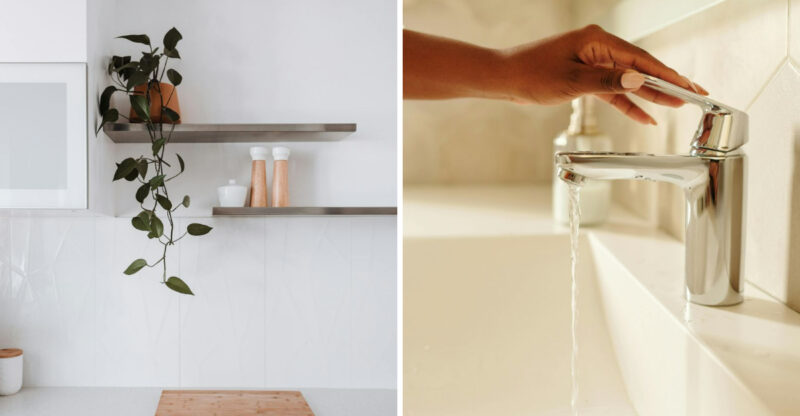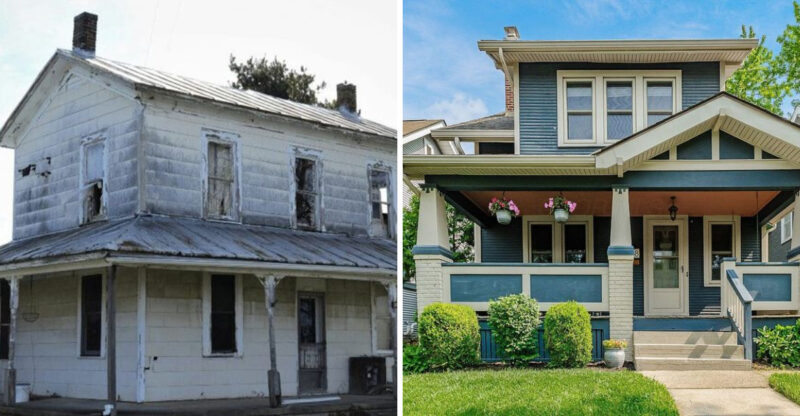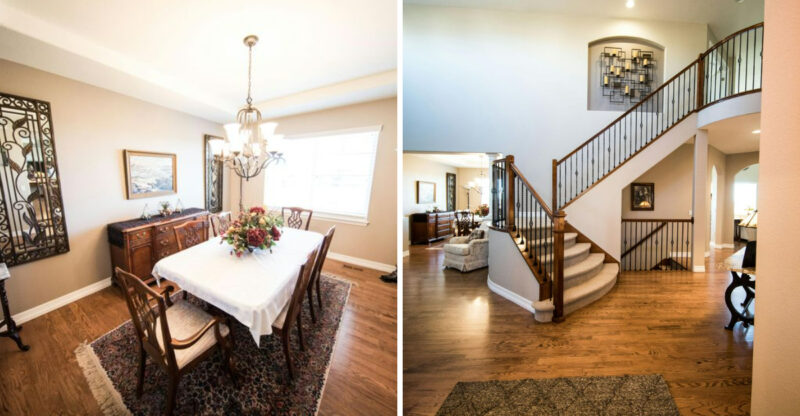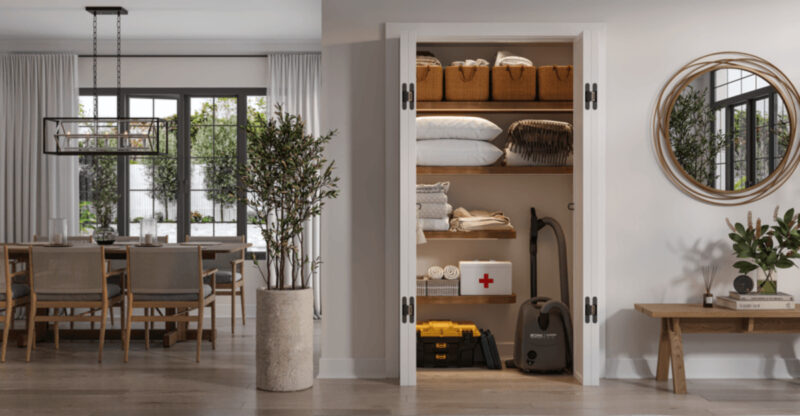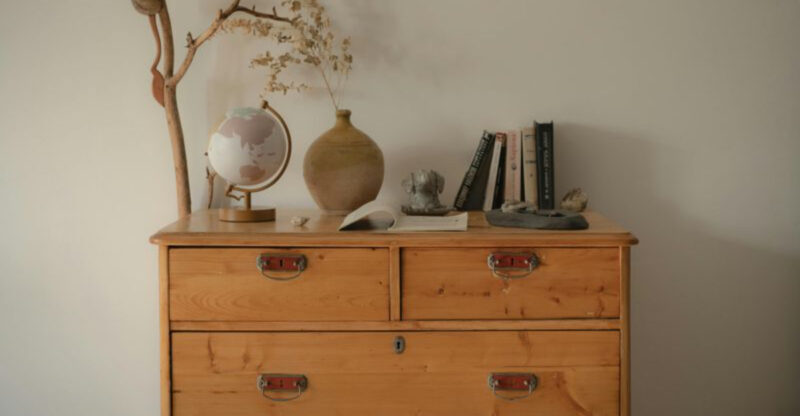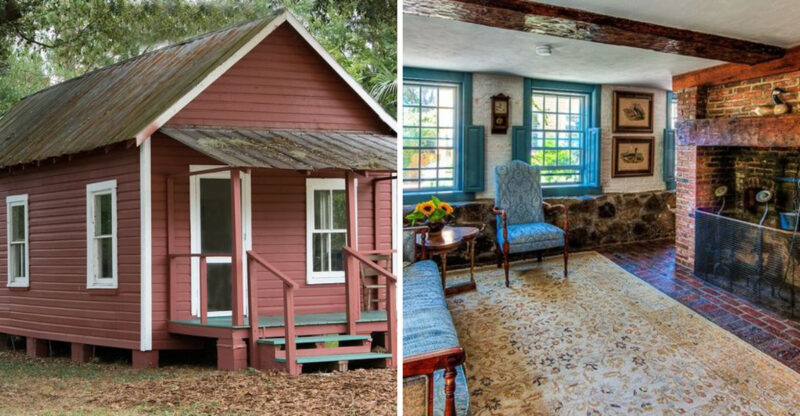19 Fixtures That Instantly Date Your Kitchen

You know that feeling when you walk into a kitchen and instantly feel like you’ve time-traveled to 1993? Yeah, your cooking corner might be guilty of that too.
From boob lights to honey oak everything, some fixtures scream “blast from the past” louder than a dial-up modem. In the age of open shelving and TikTok-worthy makeovers, outdated details are harder to ignore than ever.
If your kitchen is rocking features that were hot when flip phones ruled the world, it might be time for a glow-up. Don’t worry, I’m not judging (okay, maybe just a little).
Anyways, here are 19 kitchen fixtures that are quietly sabotaging your style, and how to replace them with modern magic.
1. Oak Cabinets With Cathedral Arches
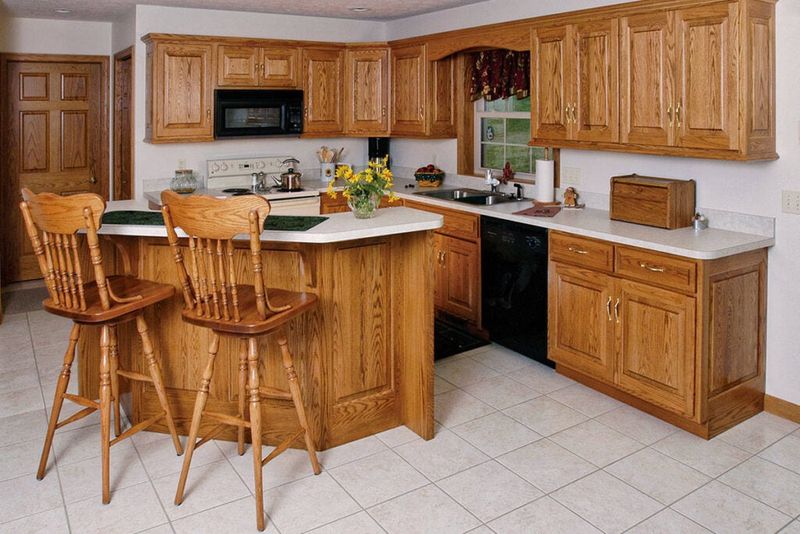
Golden oak cabinets with those arched cathedral tops were the crown jewels of 1990s kitchens. Homeowners couldn’t get enough of that honey-colored wood paired with those distinctive curved tops.
Now they’re the equivalent of kitchen shoulder pads. Modern kitchens favor clean lines and either very dark or very light wood tones.
Replacing these dated showpieces can instantly transport your kitchen forward by decades.
2. Fluorescent Box Lighting
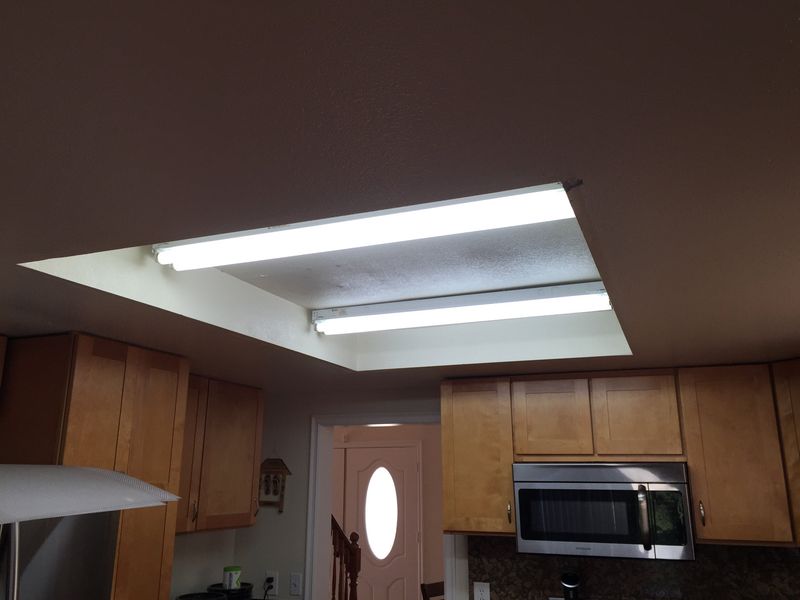
Those rectangular plastic-covered light boxes that hum slightly and cast everyone in an unflattering glow? Total kitchen mood dampeners from the 1980s and early 90s.
Nobody looks good cooking under these institutional-style fixtures.
Contemporary kitchens feature recessed lighting, pendant clusters, or linear fixtures that create ambiance. More importantly, they’re actually helping you see what you’re cooking.
3. Tile Countertops With Visible Grout Lines

Once upon a time in the 1970s and 80s, ceramic tile countertops ruled kitchen design. The grout lines between those tiles now serve as time capsules collecting stains and bacteria.
Beyond the hygiene concerns, they’re bumpy surfaces that make rolling dough or wiping crumbs a genuine challenge. Smooth countertop materials like quartz, solid surface, or even butcher block offer both better functionality and updated style.
4. Brass Hardware And Fixtures

Shiny yellow-gold brass doorknobs, drawer pulls and faucets instantly transport visitors back to the Reagan era. While brass is making a comeback, the difference is in the finish.
Today’s brass fixtures feature brushed, antique, or matte finishes rather than that high-polish lacquered look. Swapping out these small details can have a surprisingly big impact on updating your kitchen’s overall appearance. The best part, no renovation loan required.
5. Colored Appliances

Avocado green, harvest gold, coppertone brown: these colorful appliances are basically birth certificates for your kitchen. Nothing screams “1970s!” quite like a mustard-colored refrigerator.
Even the almond and bisque tones popular in the 90s have gone the way of dial-up internet. Today’s kitchens feature stainless steel, matte black, or panel-ready appliances that blend with cabinetry for a smooth look.
So be honest… is your fridge retro-chic, or just retro?
6. Wallpaper Borders
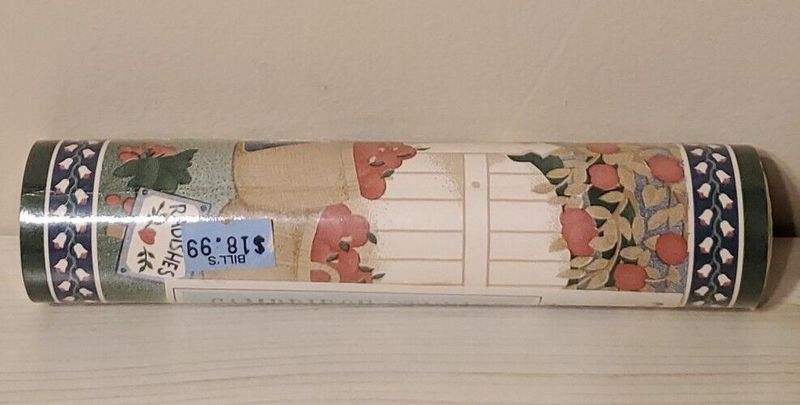
Those narrow strips of wallpaper running along the top of kitchen walls were everywhere in the 80s and 90s. Usually featuring country geese, apples, or floral patterns, these borders were once the crown molding of middle-class homes.
Nowadays, they’re like wearing a sign that says “My kitchen hasn’t been updated since Friends was still airing new episodes.”
Clean walls with modern paint colors create a much more current feel.
7. Hanging Pot Racks

Though practical in theory, those ceiling-mounted pot racks with dangling cookware had their heyday in the early 2000s. They collect dust, make spaces feel cluttered, and turn your cookware into decor whether it’s attractive or not.
Modern kitchens prioritize clean sightlines and hidden storage.
Unless you’re working in a professional kitchen or have truly showcase-worthy copper pots, there’s no need to display your cookware. Instead, store it in drawers or cabinets designed specifically for pots and pans.
8. Tuscan-Inspired Grape And Wine Decor
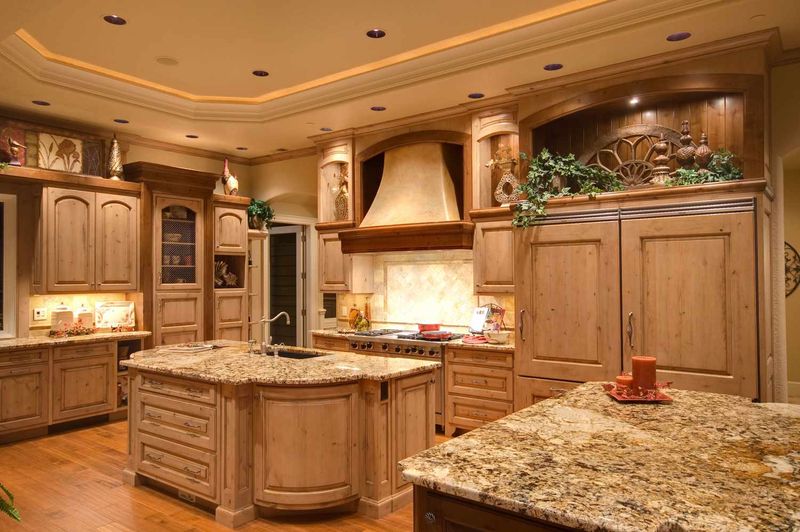
The early 2000s ushered in an obsession with all things Tuscan. Suddenly everyone’s kitchen featured grape clusters, wine bottles, and faux-Italian signage, regardless of their cooking style or heritage.
This themed approach now feels as dated as flip phones. Contemporary kitchens embrace minimalism, more personal decor that doesn’t rely on mass-produced themed items.
Your kitchen doesn’t need to look like a faux Italian villa to feel warm and inviting.
9. Glass Block Windows

You know those chunky translucent glass blocks? They were architectural darlings of the 1980s that let light in while maintaining privacy.
While functional, they’ve become unmistakable time markers in kitchen design. Modern kitchens favor cleaner window solutions with thinner frames and clearer glass.
If privacy is a concern, there are plenty of contemporary options to choose from, like frosted glass, simple blinds, or decorative window films. These updated alternatives won’t make you feel like you’re cooking inside a 1987 time capsule.
10. Wooden Spoon Collections

Remember those decorative wooden spoon sets mounted on kitchen walls? These country-kitchen staples were ubiquitous in the 1980s and early 90s.
While practical tools deserve a place in any kitchen, the purely decorative versions that were never meant to touch food have gone the way of shoulder pads. Today’s kitchens feature actual functional tools or clean walls without the wooden wall art.
11. Rooster-Themed Everything

The rooster takeover of American kitchens happened somewhere in the 1990s and refused to leave for nearly a decade. From cookie jars to dish towels, calendars to weathervanes, these birds perched on every available kitchen surface.
Unless you actually raise chickens or have a meaningful connection to roosters, this themed decor approach now feels distinctly dated. People favor cleaner, more minimalist decorative elements that don’t revolve around a single farmyard animal.
12. Laminate Countertops with Oak Trim source za sliku
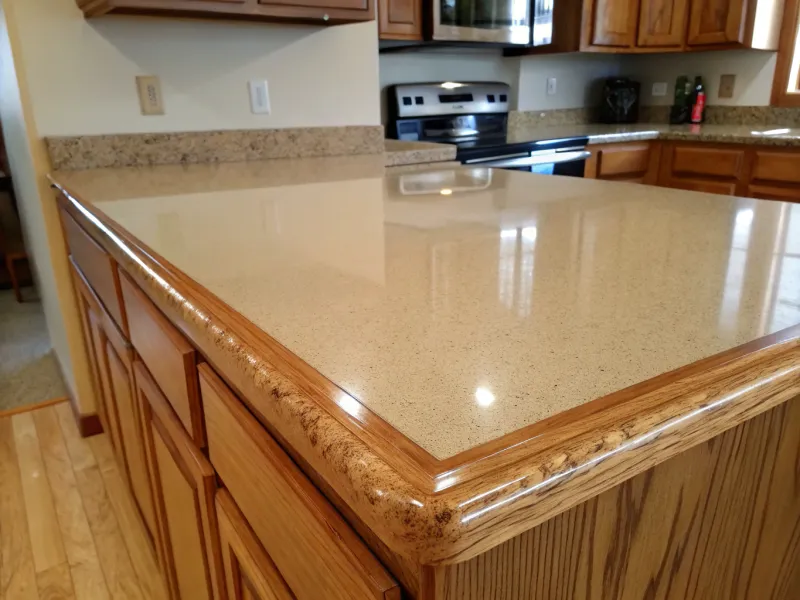
Few things scream “I was installed during the Bush administration” louder than laminate countertops edged with oak trim. This combination was a builder’s standard throughout the 1980s and early 90s.
The wood trim inevitably became a magnet for water damage and food particles.
Contemporary countertops feature clean edges, waterfall sides, or undermount styles. These designs eliminate dated wooden borders and those pesky seams where grime loves to hide.
13. Corian With Integrated Sink
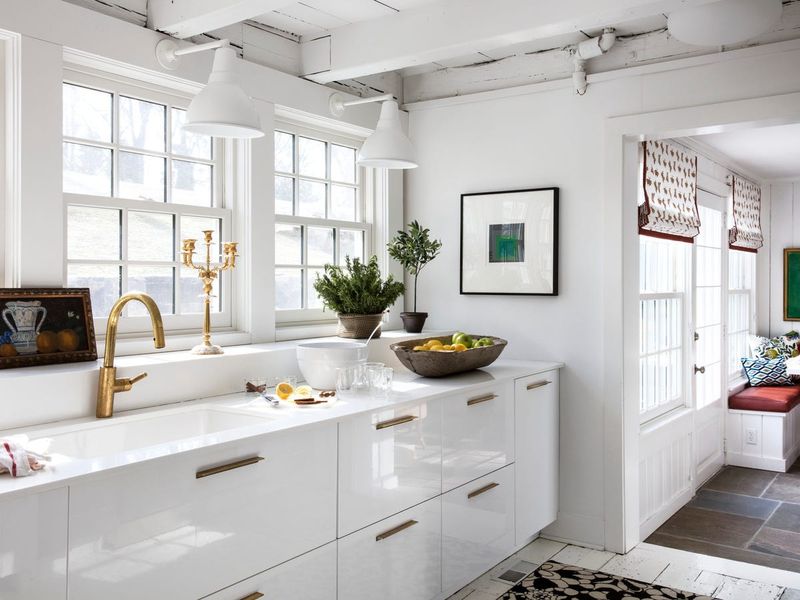
When Corian countertops with those seamlessly integrated sinks arrived in the 1990s, they seemed revolutionary. No more grimy sink edges! The problem? They stained easily and the styles were limited.
These molded one-piece wonders now immediately date your kitchen to the Clinton era. Modern kitchens prefer undermount sinks paired with natural stone or engineered quartz countertops. They offer better durability and more contemporary aesthetics.
14. Over-The-Range Microwaves

Microwaves mounted above the range became standard in the 1990s as a space-saving solution. While practical in theory, they create a visually heavy block that dominates the cooking area.
Current kitchen design trends favor hidden microwaves in pantries or islands, drawer microwaves, or smaller countertop versions. Range hoods now get to be statement pieces rather than being covered by a bulky appliance.
15. Desk Areas In Kitchens

Ever tried paying bills next to a bubbling pot of spaghetti sauce? Those built-in kitchen desk nooks from the late ’90s and early 2000s seemed like a good idea, until they turned into junk drawers with chairs.
Originally meant for cookbooks, home computers, or “productive” multitasking, they quickly became clutter zones. Today’s kitchens ditch the awkward workstation in favor of islands with seating or dedicated home offices.
After the pandemic, let’s face it, no one wants to take Zoom calls next to a toaster.
16. Speckled Granite Countertops

Those busy, speckled tan and brown granite countertops (often called “Santa Cecilia” or “Venetian Gold”) dominated the early 2000s housing boom. They were in practically every new build and renovation for nearly a decade.
While granite remains popular, those particular speckled patterns have become visual timestamps.
Current kitchen designs are all about picking a side, go bold or go calm. Some homeowners are falling hard for dramatic stone with wild veining, while others are crushing on the smooth, no-drama look of engineered quartz.
Because whether you’re making countertops or life choices, it’s either soap opera flair or Zen garden energy, no in-between!
17. Cherry Cabinets With Black Granite
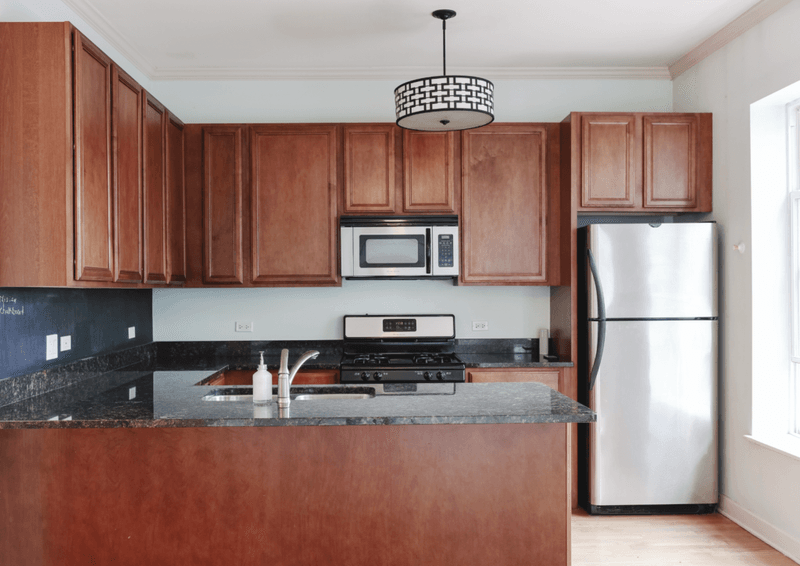
The combination of reddish cherry cabinets paired with black granite countertops dominated kitchen renovations in the early-to-mid 2000s. This high-contrast pairing was once the height of luxury kitchen design.
Today, it feels as dated as flip phones and MySpace. Contemporary kitchens favor either more subtle contrasts or mixing completely different wood species. White oak, walnut, and painted cabinets often take center stage, paired with lighter countertop options.
18. Ornate Corbels And Cabinet Details

Throwback to the early 2000s when decorative scrolled brackets under kitchen islands and intricate carved cabinet doors ruled the scene, more was definitely more. Dust bunnies had prime real estate under those brackets, and homeowners loved the extra flair.
But nowadays, kitchens are all about clean lines and simplicity. Islands ditch the dust-collecting scrolls for sleek waterfall edges or sharp straight lines.
Cabinet doors? They’ve said goodbye to ornate raised panels and hello to the fresh, timeless look of shaker or slab styles. Which camp are you in, the drama days or the modern minimalists?
19. Distressed And Glazed Cabinetry
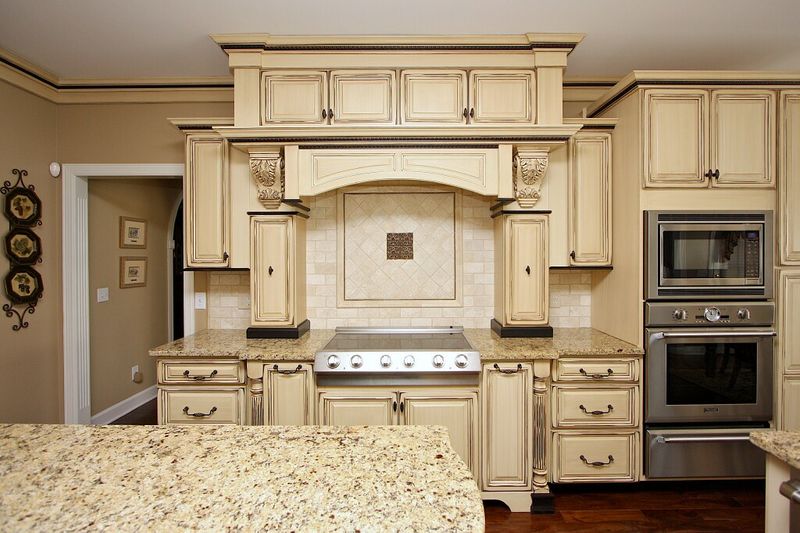
Remember when every kitchen suddenly featured artificially distressed cabinets with dark glaze caught in the corners and edges? This faux-aged finish technique peaked in the mid-2000s as part of the Tuscan kitchen craze.
The intentionally antiqued look now appears genuinely dated rather than artfully aged. Modern kitchen finishes usually go for clean painted surfaces or natural wood tones. These finishes highlight the material’s beauty without relying on artificial aging techniques.

